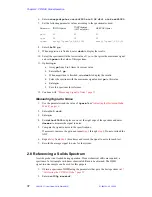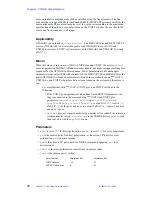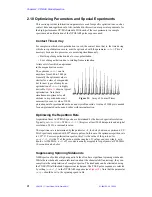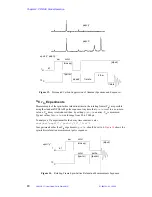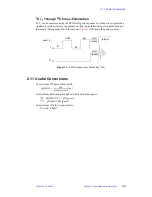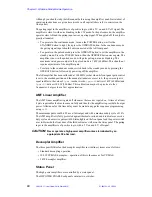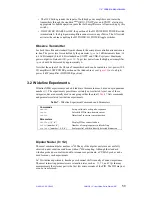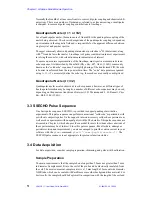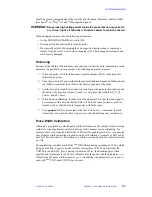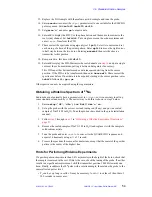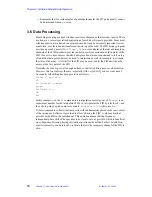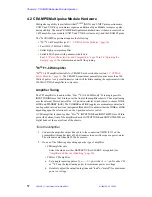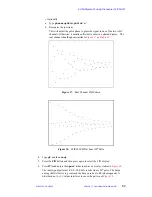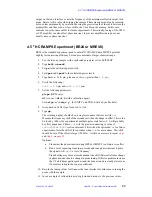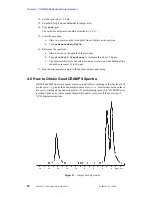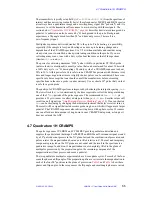
Chapter 3. Wideline Solids Module Operation
51
VNMR 6.1C User Guide: Solid-State NMR
01-999162-00 C0402
Normally the breadth of a line comes from two sources, dipolar coupling and chemical shift
anisotropy. There are a number of techniques, referred to as line narrowing, or multipulse
techniques, to remove dipolar coupling contributions to lineshape.
Quadrupolar Nuclei (I = 1 or 3/2)
For all quadrupolar nuclei, the main cause of linewidth is the quadrupolar coupling of the
nuclei being observed. The observed magnitude of the quadrupolar coupling is dependent
on orientation in the magnetic field and is responsible for the apparent difference between
single crystal and powder spectra.
The most commonly observed quadrupolar nucleus in wideline is
2
H (deuterium), along
with
23
Na and a few other nuclei. Lineshape is of prime consideration in most experiments
involving these nuclei, with relaxation measurements also of interest.
To ensure an accurate representation of the lineshape, most spectra are measured via an
echo sequence, first described by Mansfield (Phys. Rev.,
137
, A961, (1965)), commonly
known as the “solid echo” sequence. To simplify phasing of the transformed FID, the echo
is Fourier transformed from the top onwards in time. The “extra” data points are ignored
using
lsfid
. To accurately define the echo top, these echoes are usually over-digitized.
Quadrupolar Nuclei (I > 3/2)
Quadrupolar nuclei are also observed via echo sequences; however, as different types of
lineshape information may be sought, a number of different echo sequences may be used,
depending on the quantum transitions of interest (I. D. Weisman and L. H. Bennett, Phys.
Rev., 181
,
1344, (1969)).
3.3 SSECHO Pulse Sequence
One basic pulse sequence, SSECHO, is provided to support quadrupolar wideline
experiments. This pulse sequence can perform conventional “solid echo” experiments, with
or without composite pulses. It also supports inversion-recovery solid echo experiments, as
well as echo experiments with unequal pulse widths. The details of this pulse sequence are
discussed in Chapter 6, which also provides a model for users for whom other variations of
the experiment may be of interest. Since this pulse sequence, like all others, undergoes
periodic revision and improvement, you are encouraged to print the version current in your
software with the
ptext
command:
ptext('/vnmr/psglib/ssecho.c')
. The
SSECHO pulse sequence is not appropriate for proton relaxation studies.
3.4 Data Acquisition
For data acquisition, consider sample preparation, shimming, and pulse-width calibration.
Sample Preparation
The main requirement is that the sample be no longer than 25 mm nor greater than 5 mm
in diameter. Samples must fit into the coil of the probe and be electrically insulated from
the coil. The most convenient sample carrier is a 15 mm length of 5 mm outside diameter
NMR tube, which can be sealed with Parafilm or some other background-free material. For
best results, the sample should be kept small in comparison with the length of the coil and

